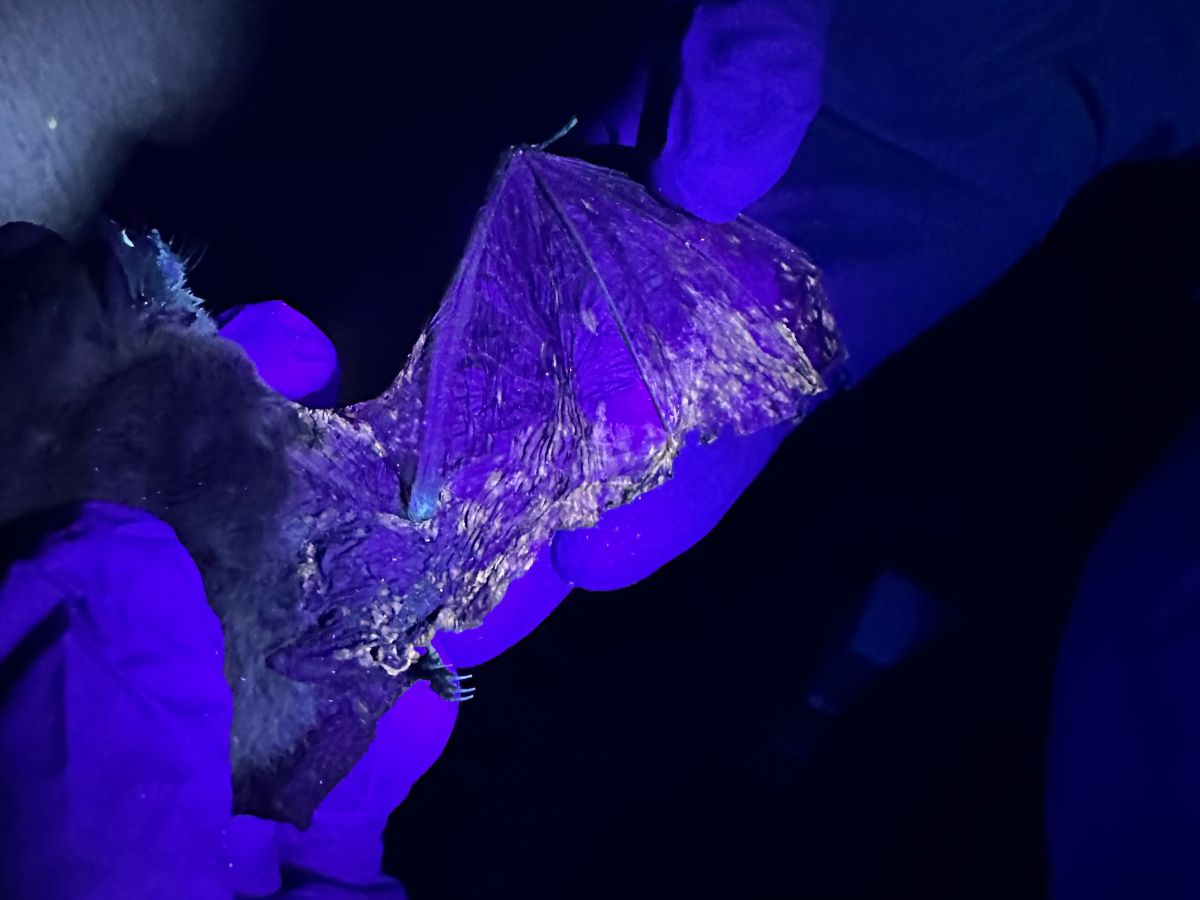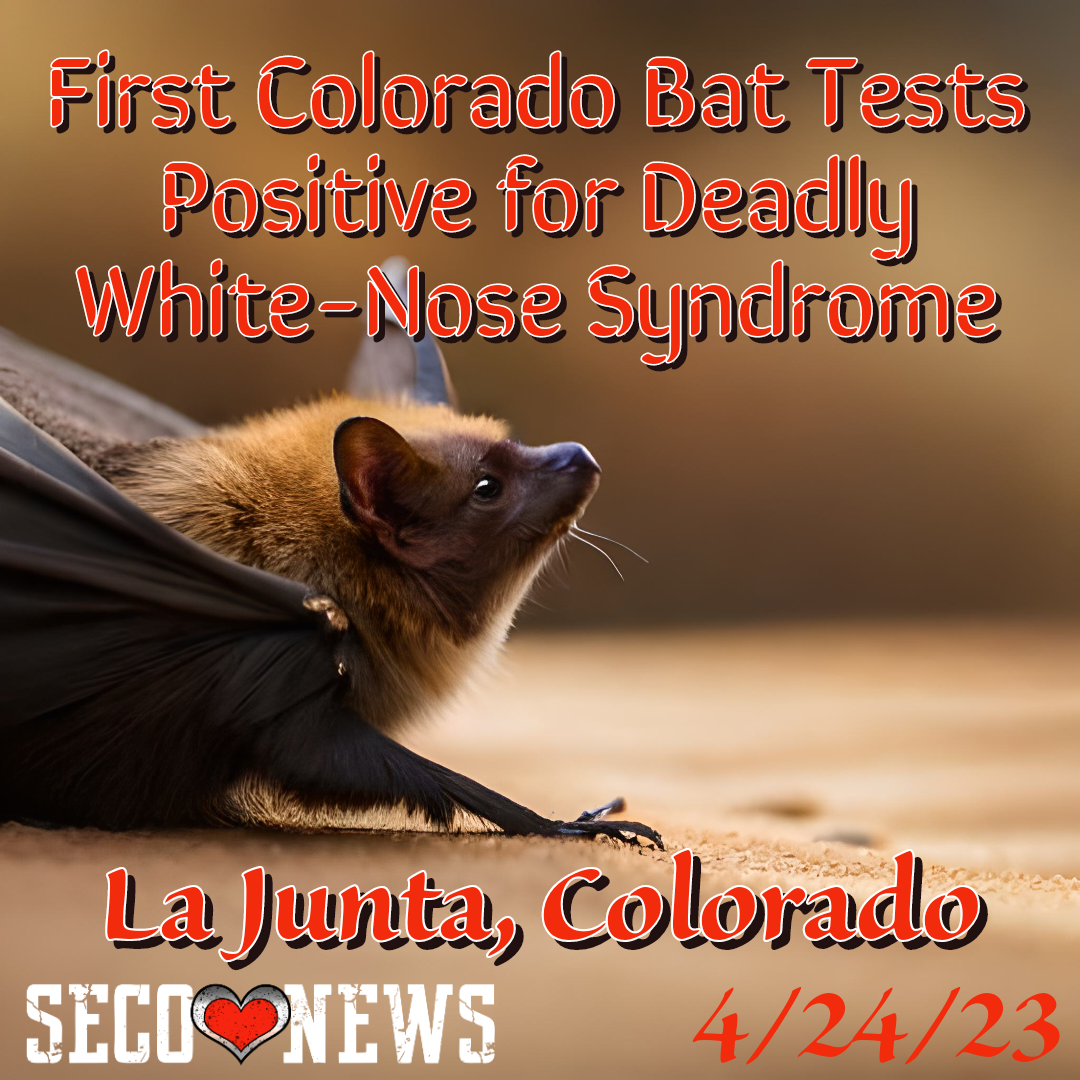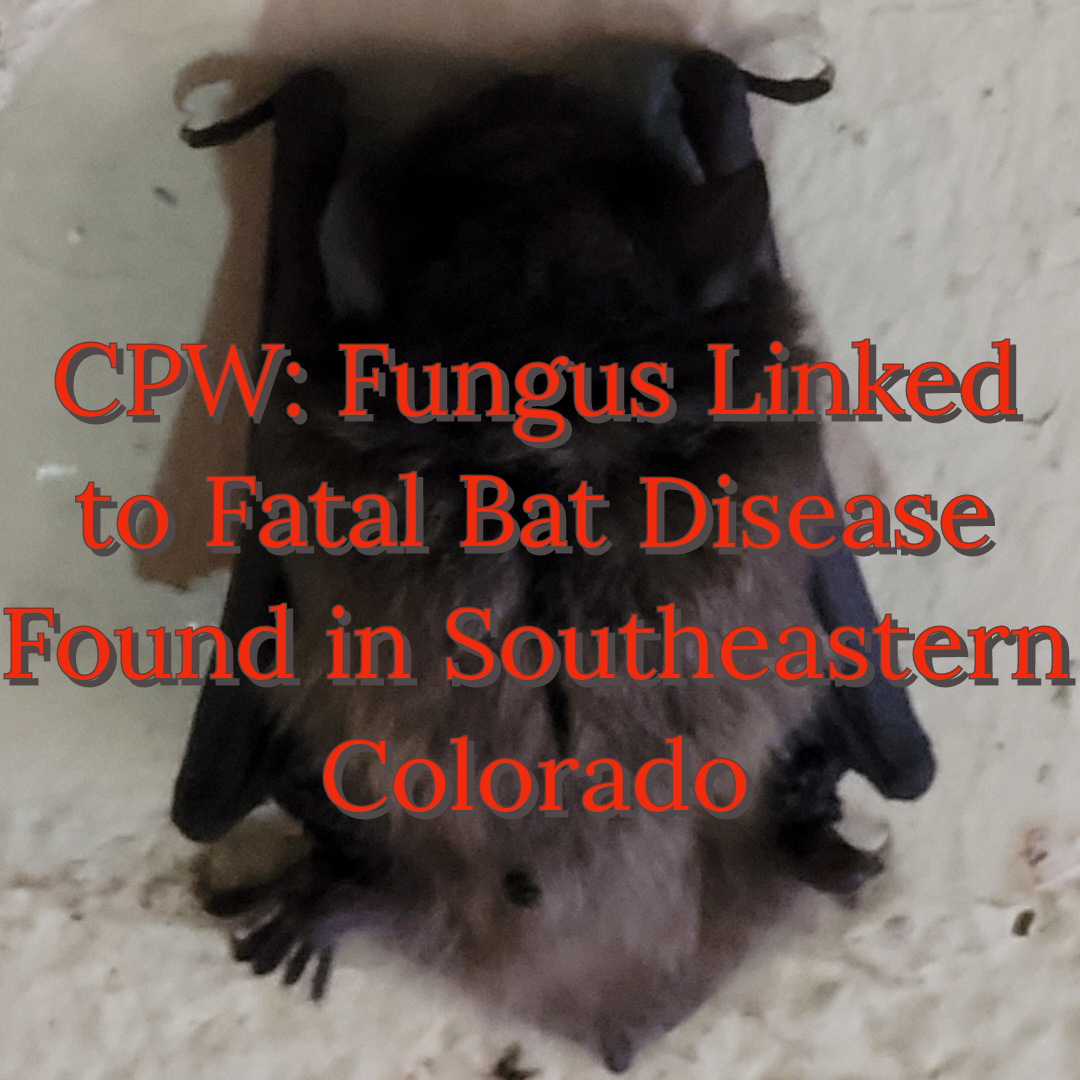Brown Bats with White-Nose Syndrome Found in Boulder County

Description: The little brown bat's wing fluoresces in yellow-orange due to the fungus that causes white-nose syndrome.

‘Little Brown Bats’ with White-Nose Syndrome Found in Boulder County
DENVER – A ‘little brown bat’ infected with white-nose syndrome (WNS), a disease caused by an invasive fungus that has killed millions of bats in North America, was recently discovered in Longmont, Colorado.
On Feb. 29, a ‘little brown bat’ was found crawling on a public bike path in Longmont. A wildlife rehabber collected the bat and determined it was very dehydrated. The wings appeared brittle, preventing the bat from flying. Colorado Parks and Wildlife (CPW) advised the rehabber to submit the bat to the CPW Wildlife Health Lab for further investigation.
CPW received the bat on March 5, 2024, and collected biological samples submitted to Colorado State University for testing. Testing results confirmed the white-nose syndrome. A second ‘little brown bat’ was confirmed with WNS two weeks later in Boulder, indicating that additional bats have been exposed and may be found in the coming weeks.
The fungus that causes white-nose syndrome has been confirmed in three ‘little brown bat’ summer roosts in Colorado, but no ‘little brown’ bats sick with white-nose syndrome have been detected in Colorado until now. White-nose syndrome was first discovered in Colorado in March 2023 in a Yuma bat collected by National Park Service staff at Bent’s Old Fort near La Junta. The white-nose fungus has been found in other locations in Colorado, but these are only the second and third bats discovered with clinical signs of the disease. The main mode of transport for this introduced fungus is from bat to bat, making it impossible to stop its spread in the wild.
“While it is unfortunate to discover this deadly disease in a second Colorado bat species, CPW did anticipate that this would happen based on what has been documented in other states,” said Dan Neubaum, CPW Species Conservation Program Manager. “We will continue to monitor the spread of this disease with our partners and ask the public to report sick or dead bats to CPW, particularly when found during winter and spring months.”
“We continue to ask those visiting caves to decontaminate their gear to prevent human spread of the fungus and remind the public not to handle bats when encountered but instead report them to CPW, wildlife rehabbers, or the Colorado Department of Public Health and Environment.”
CPW continues monitoring Colorado’s bat population trends using acoustic methods as part of the North American Bat Program and is testing bats for the presence of the fungus at winter hibernacula (locations in which bats hibernate) and summer maternity roosts by swabbing bats and testing guano deposits.
White-nose syndrome was first documented in New York state in 2006. Since then, it has been confirmed in 12 North American bat species, and it now occurs in 40 states and eight Canadian provinces.
The disease's impact on Colorado could be devastating. Of the 19 bat species native to Colorado, at least 13 may be susceptible to this disease. Any large-scale loss of bats could cause trouble for the health of Colorado’s ecosystems and economy, given estimates that these voracious insect eaters contribute $3 billion annually to the U.S. agricultural economy through pest control.
The fungus does not infect humans or pets, and bats are the primary way the fungus spreads. However, the fungus can be transported on gear and clothing that has been in contact with contaminated environments, such as caves where bats hibernate.
State and federal agencies in Colorado and throughout the U.S. ask that outdoors enthusiasts help by following these recommendations:
- Stay out of closed caves and mines.
- Decontaminate footwear and all caving gear before and after visiting or touring caves and other places where bats live.
- Do not touch bats. Report dead or sick ones to CPW by calling 303-291-7771 or email wildlife.batline@state.co.us.
- Gear and clothing used in areas where the fungus or WNS occurs should not be used in areas where the fungus is not known to occur. White-Nose Syndrome (whitenosesyndrome.org)
- To avoid accidentally transporting bats, check canopies, umbrellas, and other outdoor items for bats that may have roosted in nooks or crannies.
Visit CPW’s website for more information on WNS.
Cooperating state and federal agencies in Colorado include:
- Colorado Parks and Wildlife
- U.S. Geological Survey
- National Park Service
- U.S. Fish and Wildlife Service
- U.S. Forest Service
- U.S. Bureau of Land Management
See the full range of national decontamination guidance for the U.S. at https://www.whitenosesyndrome.org/topics/decontamination.
Related Content:
First Colorado Bat Tests Positive for Deadly White-Nose Syndrome in La Junta
CPW: Fungus Linked to Fatal Bat Disease Found in Southeastern Colorado
Follow SECO News on Facebook.
Subscribe to the SECO News YouTube Channel.
Press releases Sponsor








.png)






.png)
.png)


.png)







